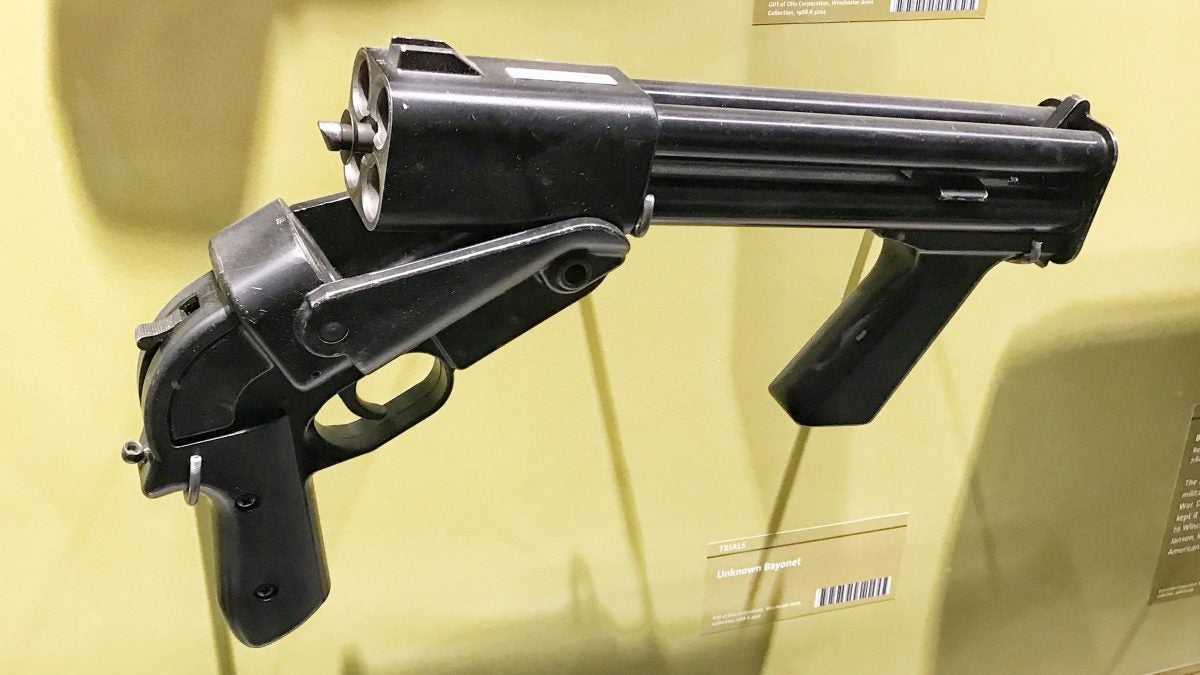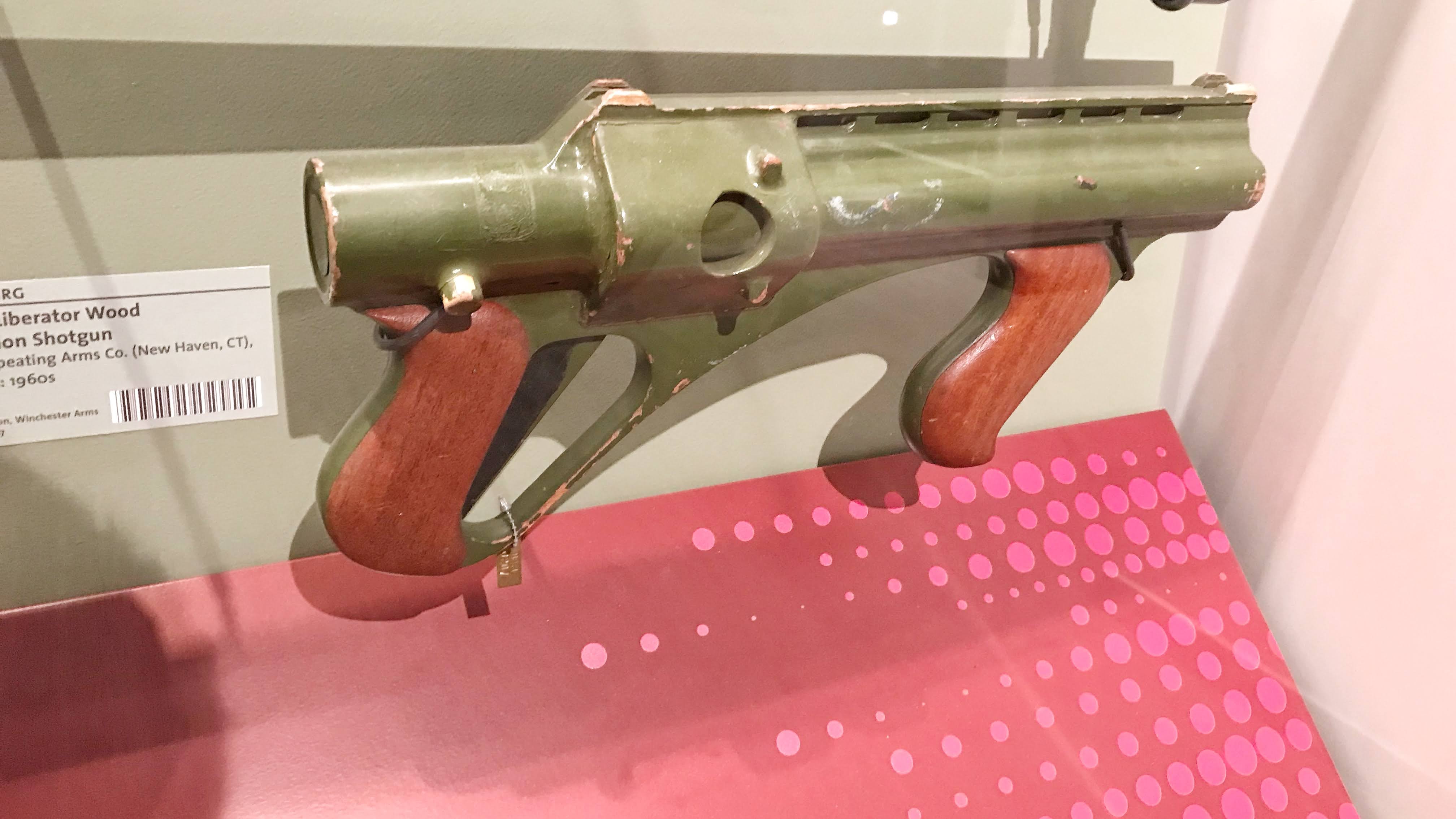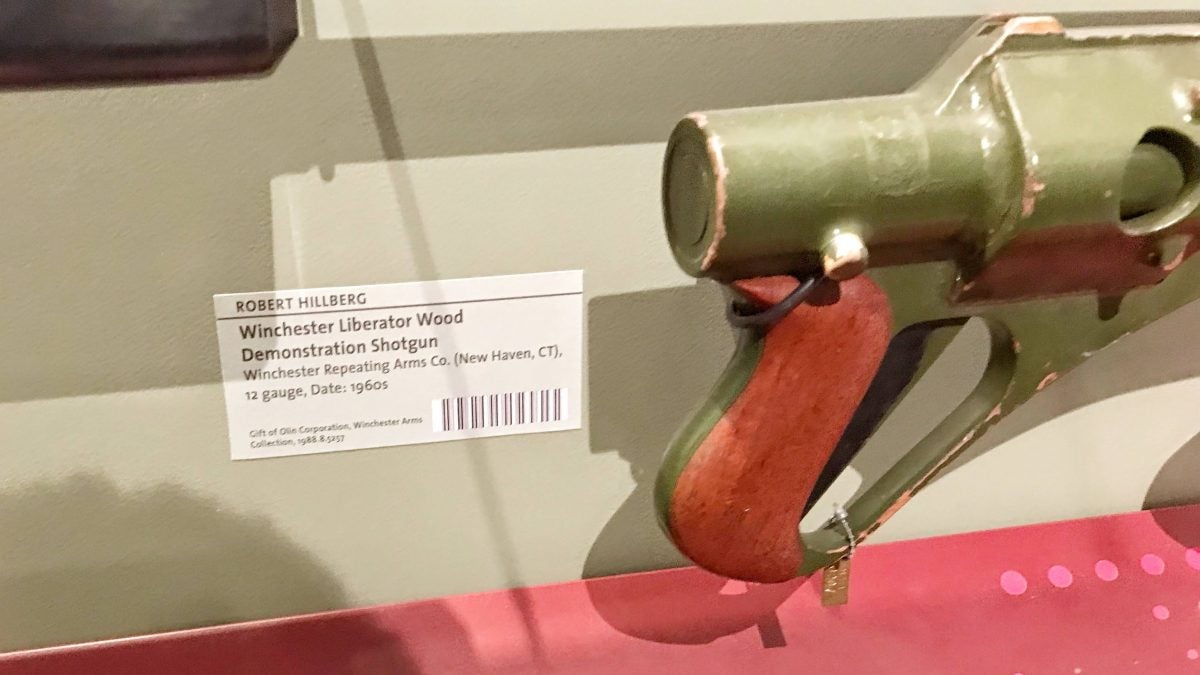Curious Relics #022: The Winchester Liberator Shotgun!
Sam.S 09.22.21

Welcome, if you are a newcomer to this fun bi-weekly segment of AllOutdoor.com! The last time around I covered the misunderstood and mythical Liberator Pistol. I went over the history, variations, current productions, specifications, and operation. Today, thanks to the Cody Firearms Museum, we are leaping into a Vietnam War-era invention originally conceived for the same reasons as the World War Two Liberator Pistols, the Winchester Liberator Shotgun. Let’s dive right into the rabbit hole!
Welcome to our recurring series of “Curious Relics.” Here, we want to share all of our experiences, knowledge, misadventures, and passion for older firearms that one might categorize as a Curio & Relic – any firearm that is at least 50 years old according to the ATF. Hopefully along the way you can garner a greater appreciation for older firearms like we do, and simultaneously you can teach us things as well through sharing your own expertise and thoughts in the Comments. Understanding the firearms of old, their importance, and their development which lead to many of the arms we now cherish today is incredibly fascinating and we hope you enjoy what we have to share, too!
History Abridged: The Winchester Liberator Shotgun
Both this article and the gun of today’s article piggyback off of the previous Curious Relics article and its gun, The Liberator pistol. The Liberator Pistol was in short, designed to be dropped into enemy-occupied territories so that resistance and rebelling forces may have a firearm to use against their invaders to gain better weaponry or to cause unrest and chaos. The Liberator Shotgun had this exact idea in mind. A designer by the name of Robert L. Hillberg wanted to make a cheap, reliable, and simple shotgun for the use that I previously mentioned. Winchester expressed interest in his design along with DARPA egging Winchester on. With the Bay of Pigs Invasion happening in 1961 and eventually the US’s entrance into the Vietnam War in 1965 the overall idea was kept continuously alive. This idea was put to solid so to speak in the early 1960s when Robert L. Hillberg designed the Mark I Liberator Shotgun and presented it to Winchester. The only known surviving example resides at the Cody Firearms Museum in Cody, Wyoming and can be seen in the photo I took below.
If you look closely this Mark I example is actually just a painted chunk of wood! This was more or less just a concept gun and would be used to describe and pitch ideas on how it was intended to function. The shotgun barrels would be in a diamond pattern and be shrouded by castings. The trigger would be one large palm/squeeze style trigger and the shotgun would be loaded using 20 Gauge packeted ammunition. The door on the side of the shotgun would be opened, a packet of four rounds of 20 Gauge shotgun shells of some sort would be inserted, the door closed, and then you would be ready to go. This whole packet of ammunition idea was quickly dropped as well as having a side door that opened and closed to accomplish loading. From here, this progressed to a more traditional break-action style. I will cover the actual developing variations down below in the Variations section.

Winchester was optimistic that the Liberator shotgun would eventually be picked up in some way akin to military adoption and usage, but this never came to pass. They sunk so much time and money into this extremely cheap four-barreled shotgun because it was intended to only cost about $20 to make. The lack of military interest led to Winchester attempting to get the attention of security and police forces by sending out all sorts of advertisements on their new Winchester Liberator Shotgun. There are mentions of it being a sort of survival gun, a less-lethal gun, or just an all-around good easy-to-use, self-defense weapon. This was all in the hopes of capturing someone’s attention and giving them further reason to complete this grand project of theirs.

Some advertising even went as far as showing off special purpose ammunition such as Super Buckshot, Slugs, Incendiary shells, and tear gas shells. Nonetheless, the advertising did not initiate any interest abroad or at home, and the project was dropped around 1966 – 1967 after very little to no orders were received. Robert L. Hillberg was not dismayed by the lack of interest garnered by Winchester’s outing of his Liberator Shotgun so he took it to Colt who would go on to produce the Colt Defender Shotgun, an eight barreled 20 gauge shotgun that was tested and yielded some positive views, but a recession at the time made the Colt Defender project also come to a close in 1971. Colt made four variants of their Defender, but that is for a different day! Let us dive into the variations of the Winchester Liberator Shotgun.
Variations: The Winchester Liberator Shotgun
The Winchester Liberator Shotgun took on many shapes and styles in its short span of failed development. There were three official designations in that of Mark I, Mark II, and Mark III. Even though there were only three official changes there were a few in between which I will designate with a star.
- Mark I Wooden Mockup: A green painted wooden concept.
- Mark I: None known left in existence. Made from castings, this would aesthetically look like the wooden concept gun. The gun itself relied on a loading door to be opened and a packet of four rounds of 20 gauge shotgun shells be loaded in as a single unit, be fired, then ejected out the side as a single unit. This early version of the shotgun was rejected by Winchester because of the packet loading aspect. Too heavy, too expensive, and too time-consuming.
- Mark II: One known in existence. This is a functional magnesium cast gun painted like the Mark I. The Mark II is a break action with the help of a big T hinge. It has the four steel barrels in a box configuration rather than a diamond formation. When the action is broken a spring-loaded extractor would lift the now 16 gauge (this is speculated to possibly be some other proprietary cartridge) shells. The front and rear grip have wooden grip panels on them. This one sports a wire stock that is either held in one position or completely removed and slid out from and out of the way. The trigger guard is able to be folded upward if the user was wearing large gloves. The death of the Mark II came along because of the barrels and casting relationship. It was difficult to manufacture these guns with the magnesium cast sleeved barrels oriented right.

- Mark III: Did away with the casting around steel barrel tubes and went with just tubes. They changed the gauge to 12 Gauge, changed the break-action to a side lever, and physical force to break it open. The extractor is now a powerful ejector.
Mark III Winchester Liberator Shotgun with side lever. Photo Credit: Wikimedia Commons
- Mark III*: Same as the other Mark III, but has a break action hinge at the top like a top break revolver and a notch going through it to help with a sight picture.
- Mark III**: Same as the other two Mark III’s, but once again the break-action activation is changed. Instead of the large fork at the top, it is a simple push-button flat in its place. The example of this specific gun that I have seen has a tan-colored front grip.
Core Specifications: The Winchester Liberator Shotgun
- Years Produced: From 1962-1966
- Cost of Production: $20 ($181.17 in 2021)
- Manufacturing Numbers: Unknown Total (At least five in existence, four at the Cody Museum and one at the FN America Factory)
- Chambering: 16 Gauge, 20 Gauge, 12 Gauge
- Barrel: Smooth Bore, Four Barrels
- Barrel Length: 13 Inches
- Stock: None, Wire Later
- Action: Double Action, Hammer Fired, Rotating Firing Pin
- Capacity: Four
- Front Sight: Fixed Ramp
- Rear Sight: Fixed Rear Square Notch
- Grip: Cast Metal, Fiber Glass, Plastic, Formerly Wood
How Many? The Winchester Liberator Shotgun
One last piece of historical information! From what I have both read and seen there are at least 5 “functional” Winchester Liberator Shotguns in existence. Most sources online that I have witnessed mention that there are only four total examples of these shotguns and that they all reside at the Cody Firearms Museum. I, however, have seen the fifth one while I worked at FN America as a Product Service Technician. They had one (a Mark III with the side hinge lever) in their “Winchester Room.” FN America has a room like that because FN is under the same family umbrella as Winchester. I actually own a book from my time at FN America called The FNMI Winchester Collection and on page 27 there is a photo of a Winchester Liberator Shotgun and on page 29 the description reads:
“Winchester, unknown model – quad barrel crowd control gun with extendable shoulder-stock, caliber 12 gauge. This quad barrel crowd control gun was designed as a “less than lethal” riot control tool firing 12 gauge rubber bullets. However, the caliber would also have made it possible to fire conventional ammunition as well. It is not known if this model was built in quantity.”
I reached out to a good friend and former coworker at FN to double-check that the Winchester Liberator Shotgun that I saw there was still in fact there. I did this because I am aware of the possibility that the shotgun could have gotten donated to the Cody Firearms Museum since I left FN America in 2017. He was nice enough to take time out of his busy day for all you guys and confirm that that Liberator is still there in the Winchester Room at FN America! Thank you very much, Rob!
Final Thoughts: The Winchester Liberator Shotgun
It is too bad that this design never really made it beyond the prototyping and marketing rooms of Winchester. Their liberator was never fielded, it never had its real chance for improvement, it simply just faded away and now there are few examples available. This is why it is imperative to head out to Cody Wyoming yourself to check out the Cody Firearms Museum. They have done an absolutely amazing job at being informative and preserving history! Without them, most likely artifacts and information on these old quad shots may have been lost forever.
In closing, I hope our Curious Relics segment informed as well as entertained. This all was written in hopes of continued firearm appreciation and preservation. We did not just realize how guns were supposed to look and function. It was a long and tedious process that has shaped the world we live in. So, I put it to you! Is there a firearm out there that you feel does not get much notoriety? What should our next Curious Relics topic cover? As always, let us know all of your thoughts in the Comments below! We always appreciate your feedback.







